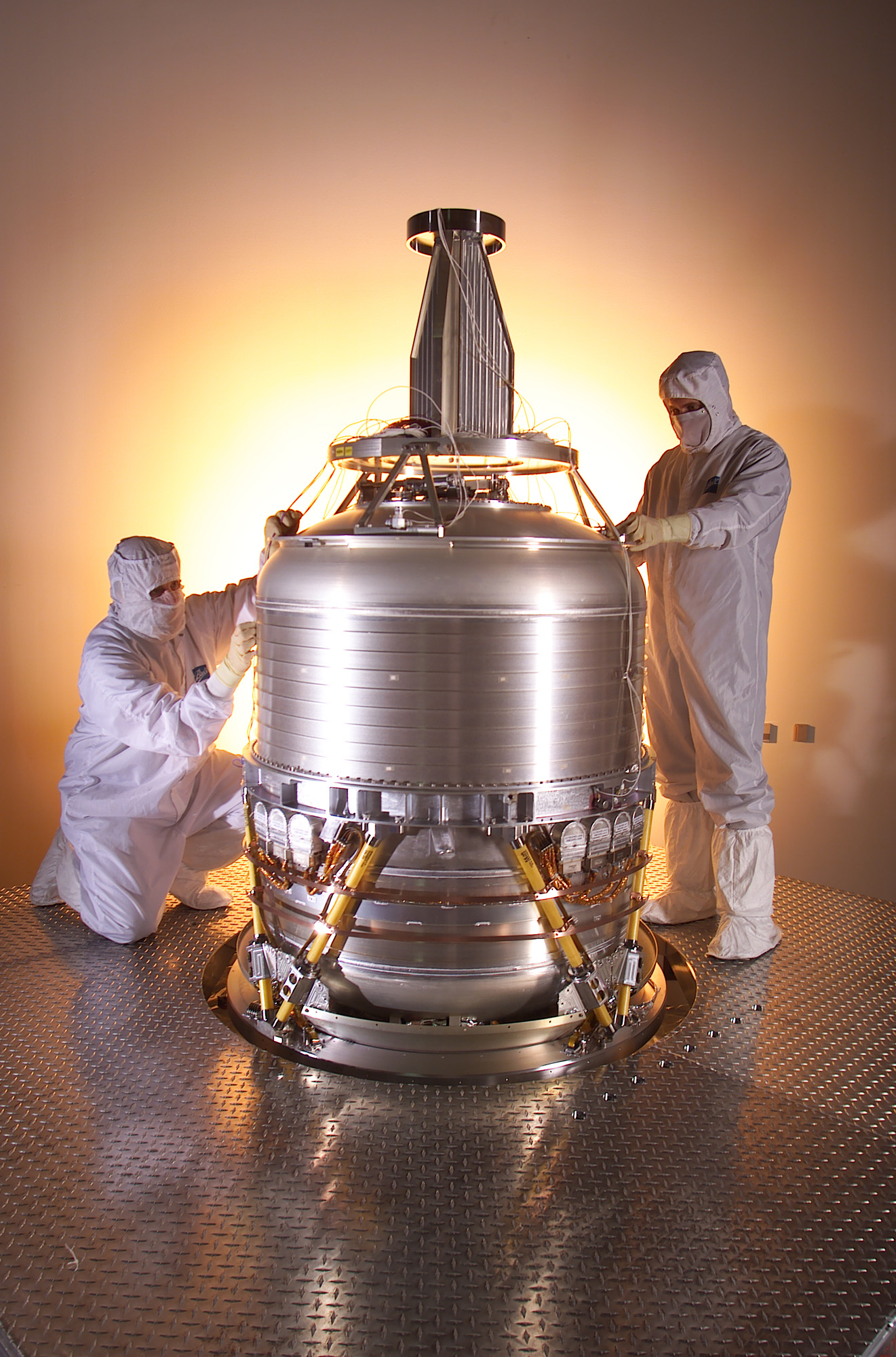
Spitzer Space Telescope
Viewing a Teeming Universe
Thanks to its infrared vision, Spitzer can see through thick space dust and forge new frontiers in space exploration. Since its launch in August 2003, the observatory’s three infrared instruments have uncovered a hidden universe teeming with embryonic stars, planet-forming disks and previously unknown galaxies.
Spitzer’s cryogen was projected to last as little as two-and-a-half years, but its efficient design and careful operation enabled it to last more than five-and-a-half years. In 2009, the telescope’s instruments were recalibrated to conduct science operations at warmer temperatures, allowing Spitzer to continue its mission of celestial discovery.
Science discoveries from Spitzer led to WISE and the James Webb Space Telescope and are setting the stage for future studies of planets orbiting other stars.
Spitzer’s cryogen was projected to last as little as two-and-a-half years, but its efficient design and careful operation enabled it to last more than five-and-a-half years. In 2009, the telescope’s instruments were recalibrated to conduct science operations at warmer temperatures, allowing Spitzer to continue its mission of celestial discovery.
Science discoveries from Spitzer led to WISE and the James Webb Space Telescope and are setting the stage for future studies of planets orbiting other stars.

What We Did
Instrument & Component Provider
We provided the Cryogenic Telescope Assembly (CTA) and two of the three science instruments for Spitzer: the Infrared Spectrograph and the Multiband Imaging Photometer. The detectors used in these instruments are up to 1,000 times more sensitive than others flown on infrared missions.
The CTA is the “eye” of Spitzer. Its lightweight beryllium telescope and innovative passive thermal control system can detect the faint infrared light produced by cosmic objects. The unique cooling system aboard the CTA allowed a “warm” launch, which was a historical first in space flight.
Once in space, the telescope was cooled to its operating temperature of five degrees above absolute zero (about -450 degrees F). The warm launch technique greatly reduced the amount of liquid helium coolant needed for a mission between two and one-half to five years long.
Spitzer was the final member of NASA’s family of Great Observatories, which include the Hubble Space Telescope, Chandra X-ray Observatory, and the Compton Gamma Ray Observatory. We played a role in each of these observatories.
The CTA is the “eye” of Spitzer. Its lightweight beryllium telescope and innovative passive thermal control system can detect the faint infrared light produced by cosmic objects. The unique cooling system aboard the CTA allowed a “warm” launch, which was a historical first in space flight.
Once in space, the telescope was cooled to its operating temperature of five degrees above absolute zero (about -450 degrees F). The warm launch technique greatly reduced the amount of liquid helium coolant needed for a mission between two and one-half to five years long.
Spitzer was the final member of NASA’s family of Great Observatories, which include the Hubble Space Telescope, Chandra X-ray Observatory, and the Compton Gamma Ray Observatory. We played a role in each of these observatories.
Sensors & Instruments
Delivering accurate data from all platforms in space, on land, in the air and at sea
Electro-Optical
High performance, high reliability data
